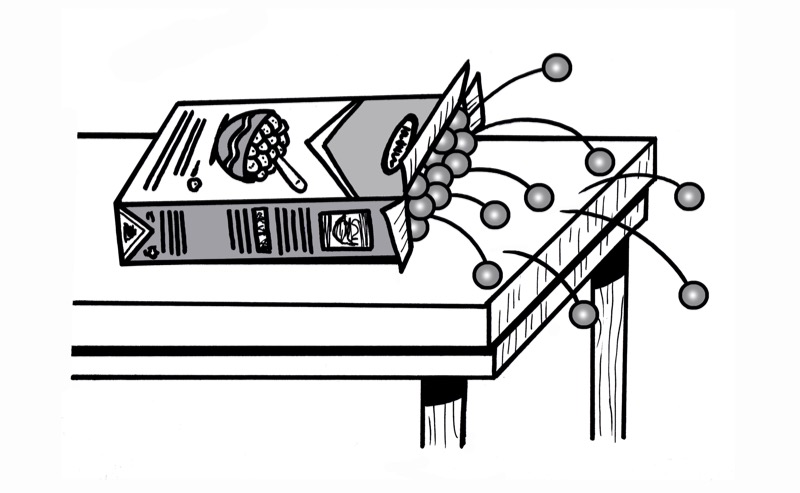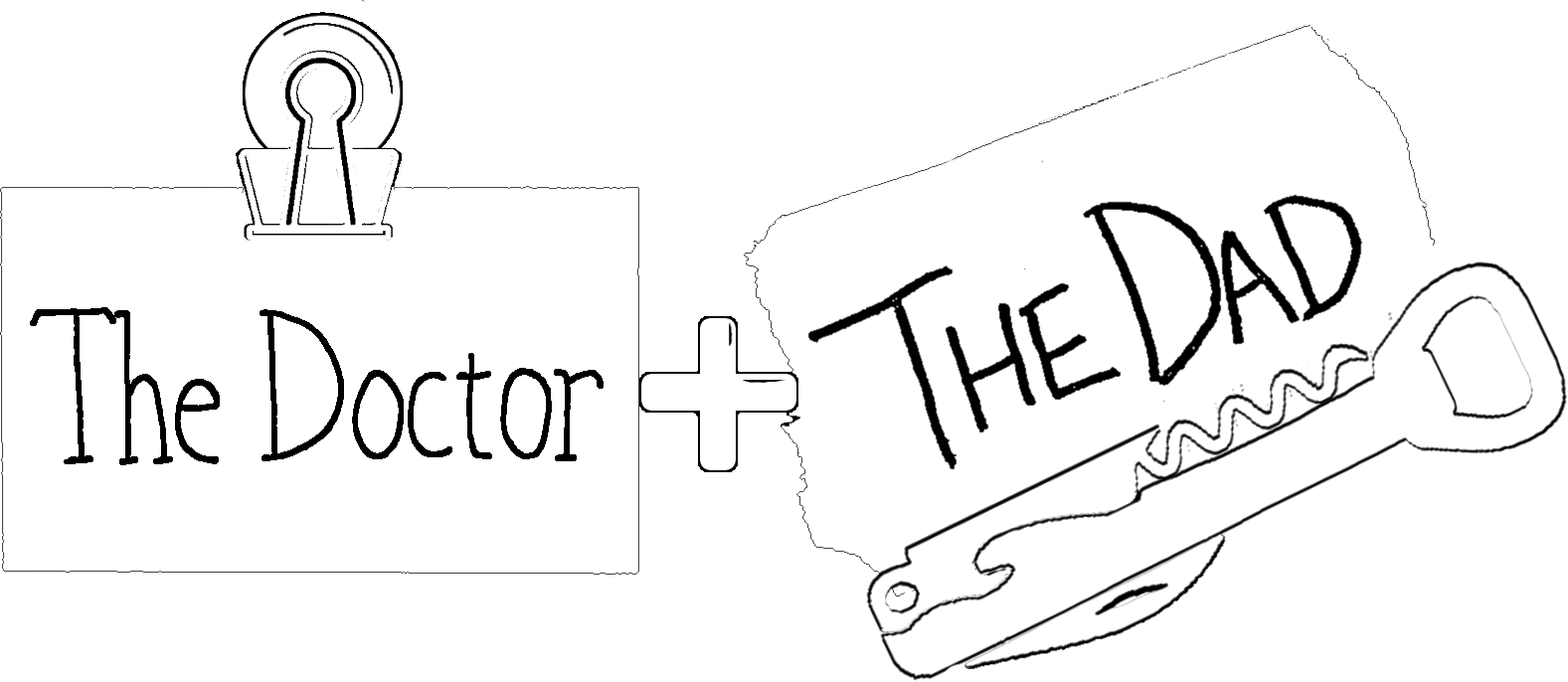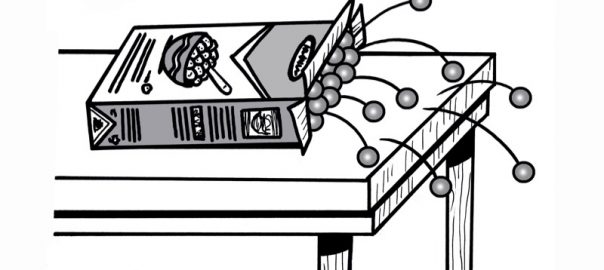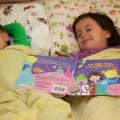
It’s The Dad’s birthday! And since we’re in a celebratory mood, we’re giving all of our readers a gift: a free excerpt from our very own highly rated parenting book, Think Like a Baby: 33 Simple Research Experiments You Can Do at Home to Better Understand Your Child’s Developing Mind.
The experiments in the book span ages prenatal through seven years old and examine every aspect of development, including memory, language, social and emotional development, physical development and more. In addition to being a fun activity for you and your child to enjoy, every experiment gives you insight into how your child’s mind works. As you’ll see from the one included below, we also give you lots of tips for promoting your child’s healthy development AND for making the tough job of parenting just a little bit easier.
So please enjoy! If you like it, buy the book. If you already have a copy, buy another one for a friend. And please remember to leave us an Amazon review!
Happy birthday (or unbirthday), everybody!
Experiment #24: Think Inside the Box
They say being a parent is a thankless job. But that’s nothing compared to what being a cartoon spokescharacter in a children’s cereal commercial must be like. Whether you’re a hungry rabbit being denied breakfast because it’s only “for kids,” or a leprechaun having your multicolored meal blatantly stolen from you, children never seem to treat these characters with respect.
But that might not be their fault.
With help from a simple box of cereal, this experiment shows you that your kid usually thinks only of herself because she can’t yet think about anyone else.
Age
2½–4 years
Ability Tested
Social Development
What You Need
- a cereal box
- something unexpected to put inside the box (and remember that your kid will see it—so no severed hand Halloween decorations or sex toys please)
How It Works
- Making sure your child is not around to see you, secretly take the bag of cereal out of the box and replace it with the unexpected object you chose. Remember, you can use anything you want as long as it’s something your child would not expect to find in the box. Pencils, bouncy balls, or your high school yearbook will all do the trick.
- Show the cereal box to your child and ask, “What do you think is in this box?” Your child should respond by saying “cereal”—if she doesn’t, try a different box she might recognize better, or just head straight to the optometrist’s office to get her eyes checked.
- Empty the box to show her it’s actually the unexpected object that’s inside—not what she guessed it would be!
- Put the unexpected object back in the box and tell her to imagine that her best friend came over. Then ask, “What do you think your friend would say is in the box?”

Unless your child’s best friend has x-ray vision, you know full well she’d think there was cereal in that box. But that’s probably not what your small fry told you, is it? Kids under four almost always report that their friends would assume the unexpected item to be inside the box—even though the friends had not seen the contents of the box and had no reason to think there was anything besides cereal in there. Your child responded this way because she knows what’s inside the box, and she can’t separate her own knowledge from that of her friend.
So at this point your kid can’t see another person’s perspective figuratively. But you know what? She can’t see another person’s perspective literally either. Researchers once set up a large, three-dimensional mountain scene so there were different things to look at on each side—like a goat and pine tree on one side and a house and a dog on the other. They let children observe the scene from each side, then had them sit on one side while an experimenter on the other side asked them questions. When the experimenter asked, “What do you see?” all preschoolers answered correctly, but when the experimenter asked, “What do I see?” children who did not yet realize that other people have a different mental experience than they do said the experimenter saw the exact same items they were currently looking at—even though they knew there was different stuff on the other side of that peak.
Young children’s inability to consider another person’s perspective can also be seen in their conversations. Have you ever had a chat with your child in which she seemed to start from the middle of a story, like she had a whole backstory in her mind but failed to share it with you first? Or how about when you ask her what she’s been doing at preschool all day, and she just says, “I don’t know” or “Nothing”? She’s not doing that to blow you off. It’s just that she doesn’t yet realize you two have separate sets of knowledge and you don’t automatically know all of the things she knows. In her mind, because she knows the beginning of her story and what she did at school, you must know too—so what’s the point in telling you?
But somewhere between four and five years old, all of this changes, and your child will come to understand that other people have a different mental experience than she does. If you repeat this experiment then, your eensy weensy empathizer will be able to tell you that a friend who hasn’t seen what’s inside the cereal box would assume its contents matched what was pictured on the front—cereal! Once kids can do this, they are said to have a “theory of mind,” or the understanding that other people have their own thoughts, feelings, and beliefs.
Acquiring a theory of mind is a hugely important step in your kid’s social development. Children who have mastered tasks that require insight into the mental lives of others (like this experiment) can use that knowledge to interact with people in more sophisticated and fun ways. The result? They tend to have more advanced social skills, better social adjustment, and are more highly rated by their peers. Preschool children asked to put pictures of their classmates into boxes marked with a happy face, neutral face, or sad face based on how much they liked to play with them tended to put more of their peers who had achieved a theory of mind into the happy face box.
So what your kid just learned could someday help her become president of the United States—or at least talk her way out of a speeding ticket.
Tips to Help Your Child
Children develop a theory of mind earlier when they get more practice thinking and talking about other people’s thoughts and feelings. So if you want to see your kid build her skills more quickly, here are a few ways you can help:
- Encourage pretend play. Engaging in pretend play benefits kids’ social skills because pretending requires thinking about the world from different vantage points. When children pretend to be different characters or interact with an imaginary friend, they have to consider the thoughts, experiences, and motivations of others.
- Have family discussions about thoughts and feelings. Talk to your child about her own feelings and guide her to think about the thoughts and feelings of other people. If you happen to see one kid push another kid at the playground, ask your child how she would feel if that ever happened to her. When reading books, talk about the thoughts and motivations that drive characters’ behavior, as well as any facial expressions pictured—along with the feelings they convey.
- Give her siblings. Brothers and sisters spend tons of time together, and whether they’re playing or fighting, they’re always learning about each other’s minds. Not that you can do anything about it at this point, but kids especially benefit from having an older sibling, since they encourage more advanced pretending, role-play, and talk about thoughts and feelings.
Tips to Help Yourself
Like playing hide-and-seek with your kid? Do yourself a favor and sneak a few extra games in before she gets a theory of mind.
Before your child is able to see another person’s perspective, her hiding technique will be hilarious—she’ll hole up behind the curtains twenty-seven times in a row, she’ll reveal her location by giggling or shouting “You can’t find me!” as soon as you get up to look, and she’ll even do that adorable thing where she sits right out in the middle of the room with her eyes closed, assuming you can’t see her because she can’t see you.
But as soon as your kid learns to put herself in your shoes, she’s going to get waaaaay better at this game. Which means her cutest hiding spots will be a thing of the past. And you’ll have to actually work to find her!





